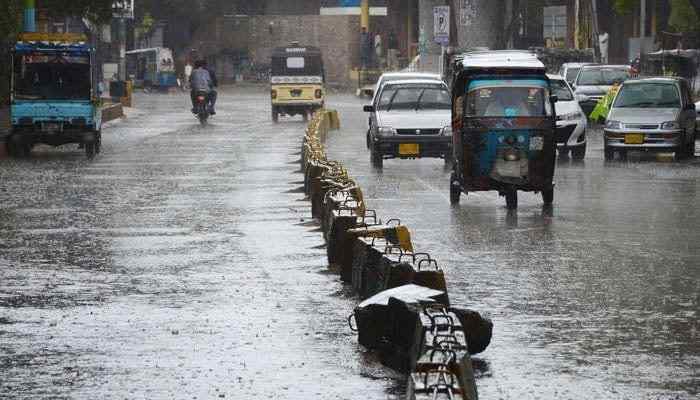After three days of relentless downpours that left Karachi crippled, the weather system behind the heavy rain is finally set to weaken, the Pakistan Meteorological Department (PMD) said Friday. Only scattered light showers are expected in the city before the system moves out.
But relief may be short-lived. Meteorologists warned that a new monsoon spell is likely to enter Sindh on August 27, bringing fresh rain to Karachi and other districts until August 30.
Flooding, Deaths, and Urban Breakdown
The rains, which began Tuesday, turned Pakistan’s largest city into a disaster zone. Streets were swallowed by floodwaters, cars drifted away in torrents, and electricity and mobile services collapsed across large swathes of Karachi.
At least 17 people lost their lives during the three-day spell, with causes ranging from drowning and electrocution to road accidents and building collapses.
The scale of disruption highlighted once again how ill-prepared the metropolis of more than 20 million remains for even routine monsoon showers.
Roads and Transport at a Standstill
Commuters bore the brunt of the chaos. Major arteries such as Jahangir Road quickly deteriorated, riddled with potholes and submerged in knee-deep water from Teen Hatti to Gurumandir.
The Korangi causeways were shut down after the Malir River swelled to dangerous levels. Underpasses at Sohrab Goth and Drigh Road became impassable, while rainwater stagnated on Airport Road and routes connecting Safora to Pehlwan Goth, choking traffic for hours.
Several private schools closed their doors, shifting classes online for the day. However, the Sindh government has yet to order a province-wide closure.
Karachi Plunged Into Darkness
The electricity grid collapsed under the weight of the storm. Prolonged blackouts left residents stranded without power — and, in many cases, without water — for up to 56 hours in areas like Gulistan-e-Jauhar.
Frustration boiled over into the streets. Residents, including children and the elderly, gathered outside K-Electric’s office, banging drums and chanting against the utility company.
K-Electric insisted that 2,000 of its 2,100 feeders were operational, with only around 100 still offline due to waterlogging. But residents in neighborhoods such as City Villas, Saddar, and Jubilee Market reported continuous outages since Tuesday.
For many Karachiites, the blackout-flood combination has become an all-too-familiar ordeal.
Climate Change Looms Over Pakistan
This season alone, nearly 750 lives have been lost to rain-related incidents across Pakistan. Experts warn that such disasters will become more frequent and more intense as climate change accelerates.
Pakistan was one of the hardest-hit countries during the 2022 monsoon floods, which drowned one-third of the country and killed about 1,700 people. Karachi’s latest breakdown is another reminder of the country’s fragile urban infrastructure in the face of worsening weather extremes.
